Paul over at Red Mug Games let us know they had a new release on the horizon (Released 4/1/24) and asked us to take a look. I love a good ghost story, and so I took a peek.
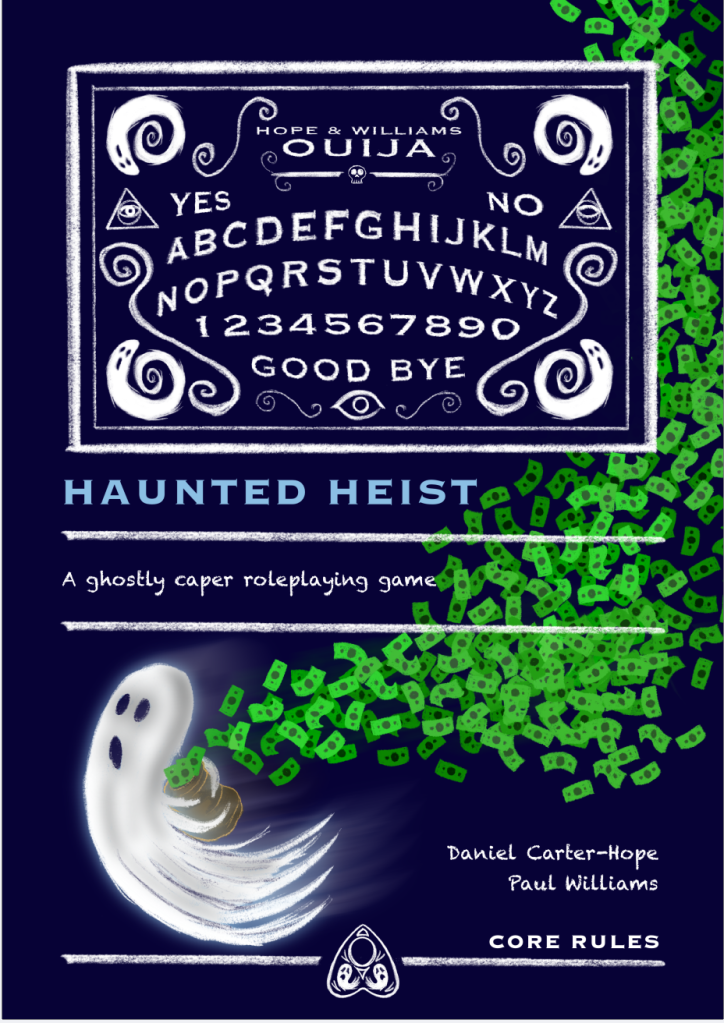
Haunted Heist is “A ghostly caper roleplaying game” where the GM (Game Medium) takes on the role of a medium recruiting ghosts from the criminal underworld to go on heists. At the concept level this sounds fun, and I can’t think of any other game offhand built around the idea. So major points for originality. The PDF contains a default setting, and a good ammount of prompts for the sort of quests you could go on, which is handy. This makes Haunted Heists the sort of thing I could see breaking out every Halloween for a one shot, or for a light hearted campaign with some friends who want to get into ghostly hijinks.
As always we should judge a book by its cover, and I love some of the art, drawn by Creator Paul Williams. The cover shot sets the tone perfectly, letting me know these ghosts are more casper and less poltergeist. I love that little guy running off with his bag of cash going everywhere. The style is effective, and lets me know, things might get silly, and my schemes probably won’t pan out exactly how I want, but thats the fun. Throughout the art, we get cartoony drawings of the various silly ghosts we might encounter, like a seagull caught in coke rings or a viking warrior. The art is plentiful throughout, and most pages have a couple things per page to look at, and when there is a page thats mostly just a chart, the layout is done in such a way that the pages are at least interesting.
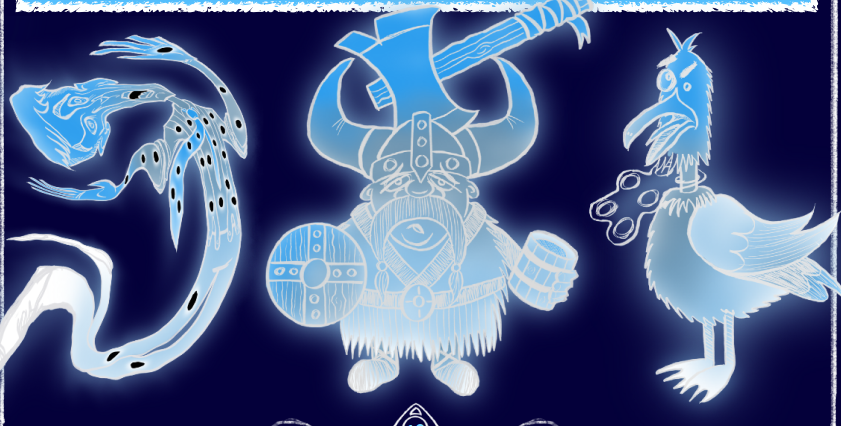
The game is set in the town of Mortecambe Bay, a ramshackle coastal English town that used to be a big deal. In the 18th century it was a tourist destination with a grand pier, funfair, and giant hotel. Now though, its almost abandoned, and full of spooky places, like a haunted peer, ruined carnival, and haunted house. We all know the best ghost stories are on spooky coastal towns, or the American West, and so this is a hit. We get all the classic beats for the GM to set adventures in. You take the role of a criminal that died in the town, which is cursed and forced to haunt the town itself. The GM takes the role of a medium who summons the various ghosts and pulls the party together. A unique mechanic to the game, is that the GM is not only given an in game role, but tied to in game stakes. See, the GM is hugely in debt, and if their ghostly crew can’t pull off the heist, they will likely end up a ghost themselves. I am pretty anti-GMPC, but this mechanic does a really good job of pivoting the relationship and ensuring everyone at the table knows its not the GM vs players, and that the GM very much wants the players to succeed. I think its a clever bit of lore that ensures the roles are clear.
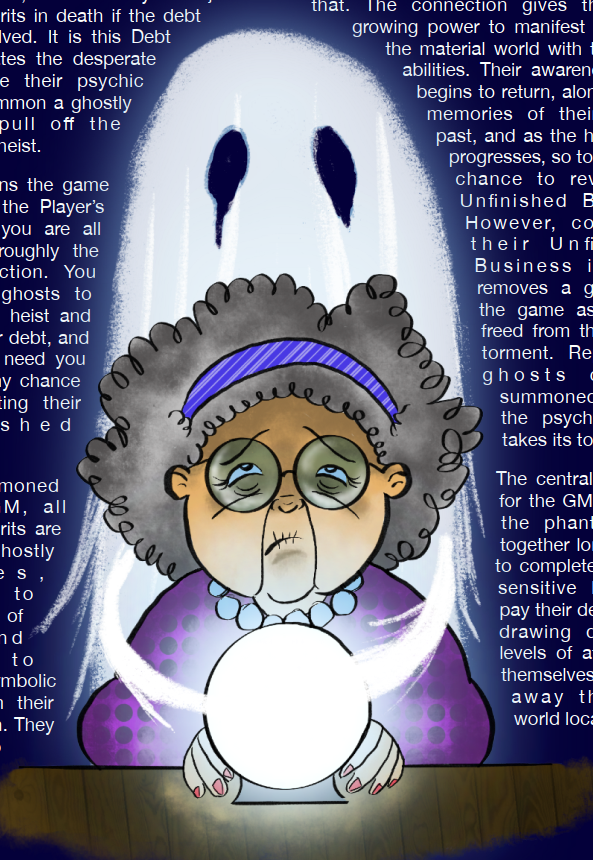
Mechanically, the game is relatively rules light, and I can see some Blades in the Dark influences, at least with the Psychic Clock concept. The GM starts the game with a d6 showing 6 in front of them, and it ticks down as gameplay progresses throughout the Heist Phase. This die tracks the Mediums concentration and ability to maintain connection to the ghosts, and if it expires the connection is lost. I’ve got some comical giant D6, and would certainly use those for this to really make sure it has a presence at the table.
Players make Spooks, with some very specific background details. Name, Date of Death, an Anchor (what or where are you haunting) a Criminal Past, and a Tale of Death. The presentation for the sample characters really helped make this clear for me. I got some serious Luigi’s Mansion vibes for the style of ghosts.
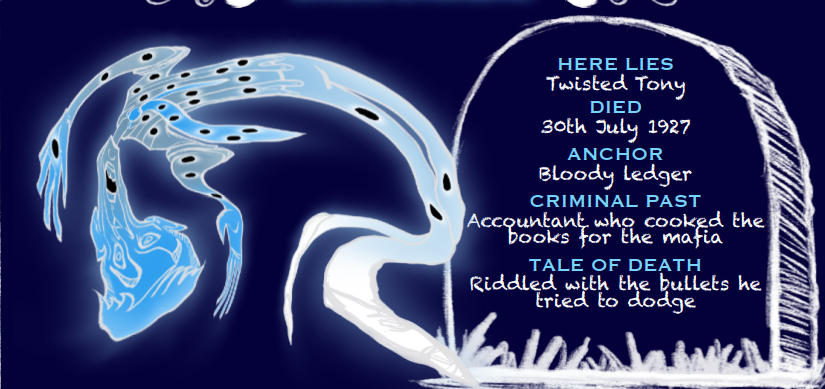
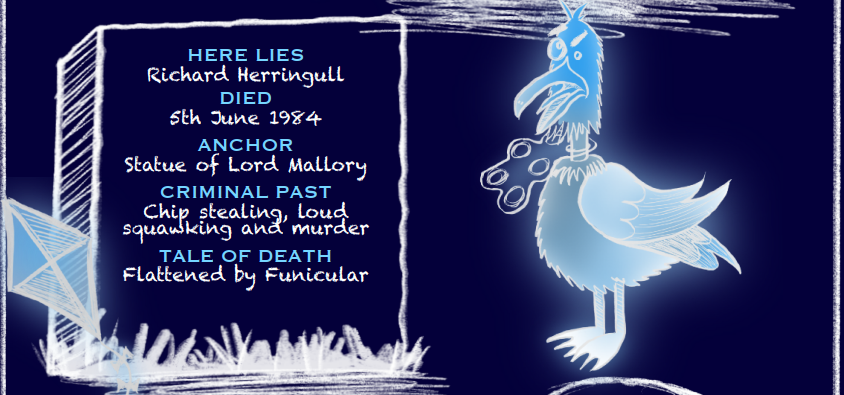
Your spirit has a level (SL) indicating how well anchored you are, tracked with your own D6, set to 6 to start. As you take actions or use powers, your SL decreases until you discoporate, and the GM needs to try to resummon you. This is basically gaurenteed, and the only real risk here is the delay on how long it takes you to get resummoned, keeping players at the table, engaged, and invested in the story. You know my thoughts on PC death, but suffice it to say I’m a fan of this idea. No one is being told an hour into a game that they “may as well head home, because we won’t get to you again today”.
Each spirit is given a class, one of three, which gives you ghost powers. To me, that implies the game is built for 3 PCs, but I’d have liked to see a little more variety here. I never really like to have the same power written on my sheet as another player as our main thing. In D&D terms (every rpg is compared to D&D) having two rogues in the party with high sneaking checks. One gets +9 and one +6. The party ends up always sending the +9 one out to sneak, even if the +6 one intended to be sneaky, and even is sneaky compared to the rest of the parties +2. Tangent over. This means that for 3 players, you end up with one person as each class. Your playgroup’s culture will dictate that there is one no one is excited to play, but someone is stuck with it. I’d have liked to see 5 classes for an assumed 3 player game, or as many as 8 for an assumed 5 player game.
Classes give your spirit a bunch of powers, and you spend SL to do them. The Haunter class is your classic ghost, who gets powers like Jump Scare, or WOOOOOOO! which seems like a delight to use. The Possessor can jump into the living and get them to do stuff, with powers like “I like to Move it Move it” which let you force a living target to go somewhere. The Poltergeist can move objects, and gets powers like “Shut that Door!” The three classes work as a team to commit crimes. One can talk to and direct the living, one can force them to do stuff, and one can move objects. Reading the classes really gives a feel for how the game is expected to play out. You’re going to have three players at the table, talking (like unseen invisible ghosts) about how to get these dumb living people to go and open a door, or leave that room, or break this thing. I’m getting real Ghosts vibes as I spell it out.
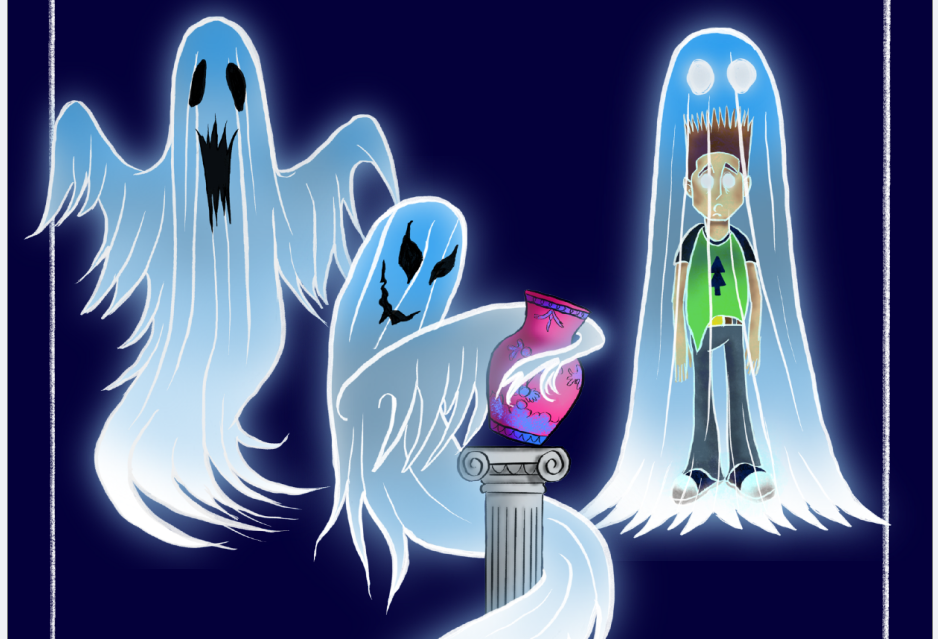
Game play has three distinct Phases. The Manifestation Phase, where the players build ghosts. The Planning Phase, where players plot and prep their ideas. The GM lays out the Heist, with its Location (where it takes place), Score (What you’re stealing), and the Obstacles (What protects it). They give examples like rival living burglers, or locked in a safe, but I could also see something as mundane as “A seagull dropped the necklace under the peer but living folk won’t go down there because its gross” being a blast, depending on how silly you want to get.
Overall, Haunted Heists seems like a really fun time. I can envision is as the sort of game you can break out on the fly in the middle of a board game night and do a quick one off heist, or you could do a longer campaign with multiple, complex, heists strung together and a rotating casts of ghosts as they unravel a largery mystery. The mechanics are straight forward and easy enough to grasp, that the GM can essentially teach someone while the game is played, but veteran players can probably still get some joy out of comboing the various class powers off one another.
Haunted Heists can be found on Drivethrough RPG.
